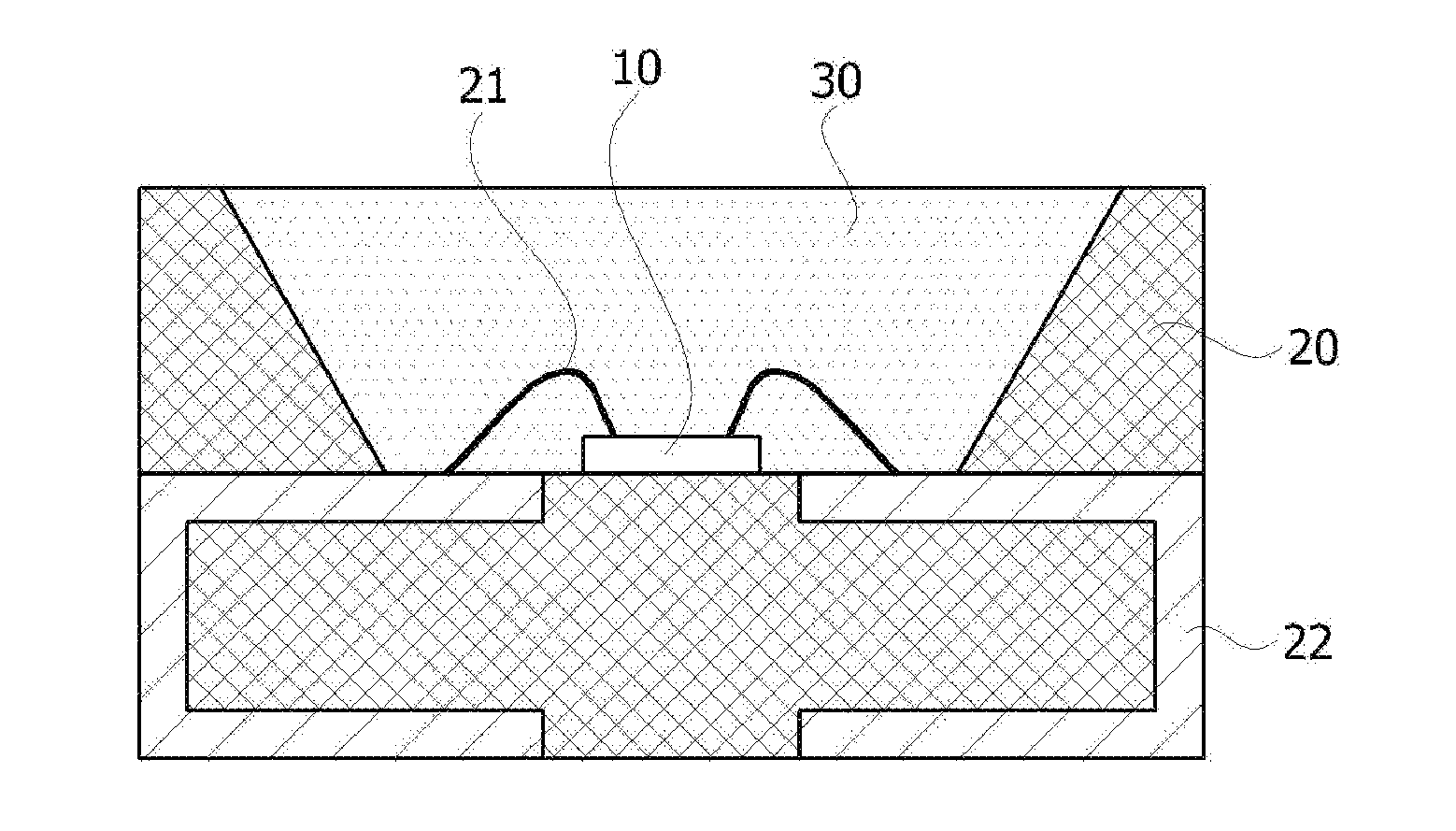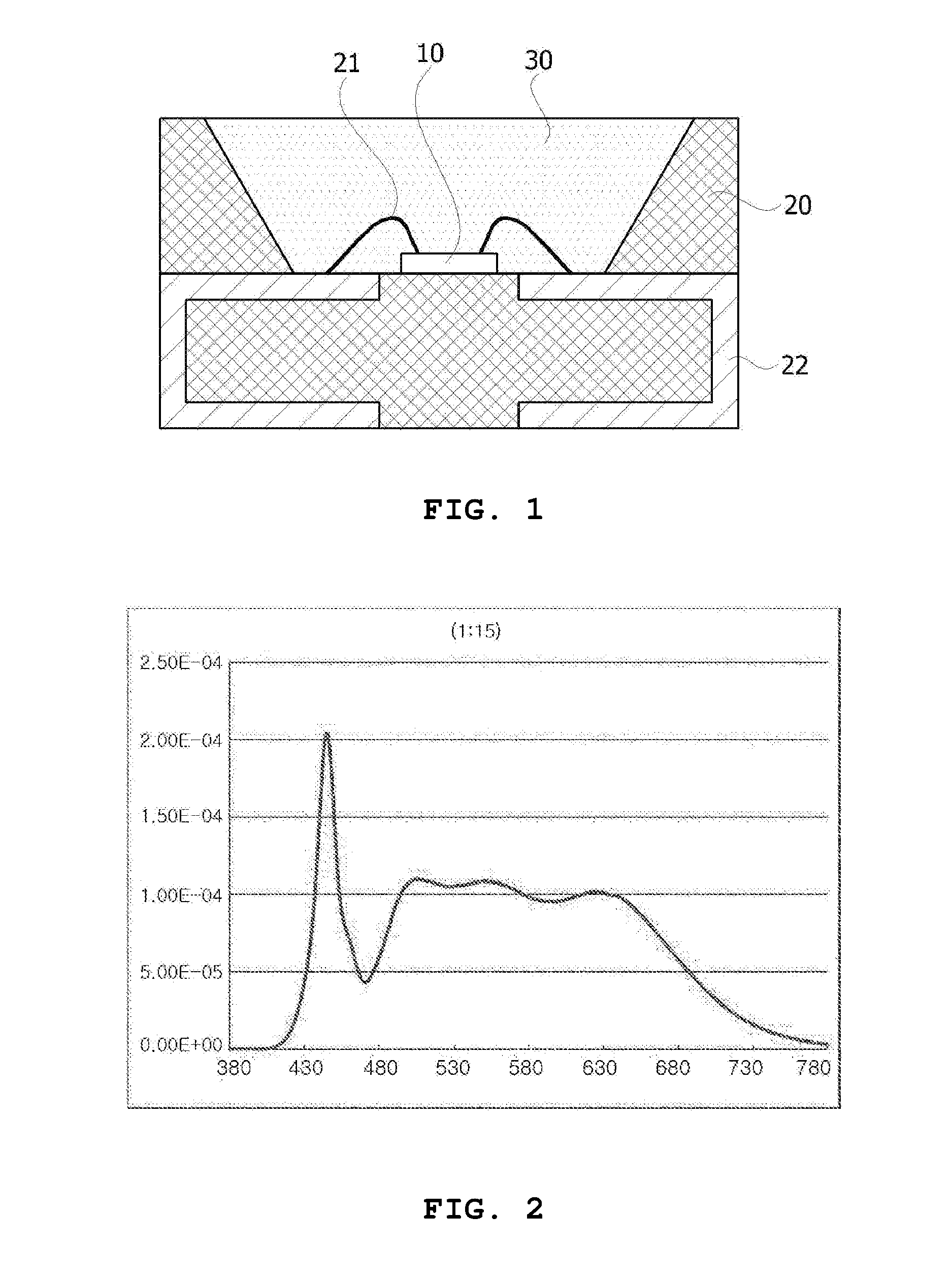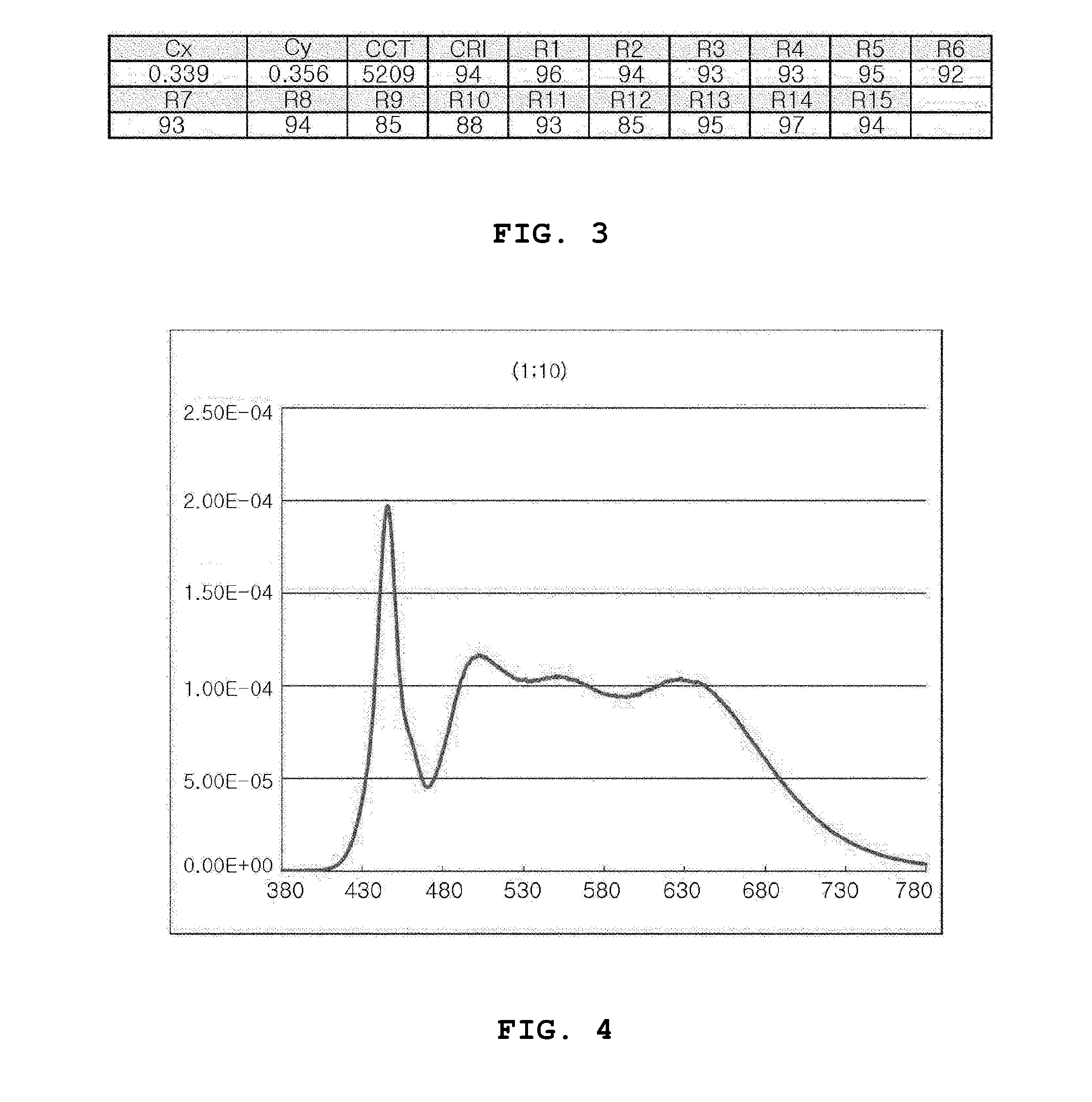Light emitting device
- Summary
- Abstract
- Description
- Claims
- Application Information
AI Technical Summary
Benefits of technology
Problems solved by technology
Method used
Image
Examples
first embodiment
[0072]A compound phosphor at 12.5 wt % and a sealing material at 87.5 wt % were mixed and coated on a blue LED chip with a size of 1000 μm×500 μm and a peak wavelength of 446.3 nm. The compound phosphor was manufactured by mixing a first phosphor (BaSi2O2N2:Eu2+) having a peak wavelength of 497 nm at 5.4 wt %, a second phosphor (Lu3Al5O12:Ce3+) having a peak wavelength of 520 nm at 80.7 wt %, and a third phosphor (CaAlSiN3) having a peak wavelength of 650 nm at 13.9 wt % into the sealing material. Here, ratios of the phosphors were calculated based on 100 wt %. The ratio of the first phosphor to the second phosphor was 1:15. A spectrum of light emitted from a manufactured white LED is illustrated in FIG. 2, and a CRI evaluation table is illustrated in FIG. 3.
[0073]Referring to FIG. 3, all CRI values of R1 to R15 were 80 or more, and R12 was measured to be a very high value of 85.
second embodiment
[0074]A compound phosphor at 13.3 wt % and a sealing material at 86.7 wt % were mixed and coated on a blue LED chip with a size of 1000 μm×500 μm and a peak wavelength of 446.3 nm. The compound phosphor was manufactured by mixing a first phosphor (BaSi202N2:Eu2±) having a peak wavelength of 497 nm at 7.7 wt, a second phosphor (Lu3Al5O12:Ce3+) having a peak wavelength of 520 nm at 76.9 wt %, and a third phosphor (CaAlSiN3) having a peak wavelength of 650 nm at 15.4 wt % into the sealing material. Here, a ratio of the first phosphor to the second phosphor was 1:10.
[0075]A spectrum of light emitted from the manufactured white LED is illustrated in FIG. 4, and a CRI evaluation table is illustrated in FIG. 5. Referring to FIG. 5, all CRI values of R1 to R15 were measured as 90 or more, and thus the CRI was greatly improved.
third embodiment
[0076]A compound phosphor at 13.9 wt % and a sealing material at 86.1 wt % were mixed and coated on a blue LED chip with a size of 1000 μm×500 μm and a peak wavelength of 446.9 nm. The compound phosphor was manufactured by mixing a first phosphor (BaSi2O2N2:Eu2+) having a peak wavelength of 497 nm at 10.5 wt %, a second phosphor (Lu3Al5O12:Ce3+) having a peak wavelength of 520 nm at 73.4 wt %, and a third phosphor (CaAlSiN3) having a peak wavelength of 650 nm at 16.1 wt % into the sealing material. A ratio of the first phosphor to the second phosphor was 1:7.
[0077]A spectrum of light of the manufactured white LED is illustrated in FIG. 6, and a CRI evaluation table is illustrated FIG. 7. Referring to FIG. 7, all CRI values of R1 to R15 were 80 or more, and a value of R12 was highly increased to 99.
PUM
 Login to View More
Login to View More Abstract
Description
Claims
Application Information
 Login to View More
Login to View More - R&D
- Intellectual Property
- Life Sciences
- Materials
- Tech Scout
- Unparalleled Data Quality
- Higher Quality Content
- 60% Fewer Hallucinations
Browse by: Latest US Patents, China's latest patents, Technical Efficacy Thesaurus, Application Domain, Technology Topic, Popular Technical Reports.
© 2025 PatSnap. All rights reserved.Legal|Privacy policy|Modern Slavery Act Transparency Statement|Sitemap|About US| Contact US: help@patsnap.com



